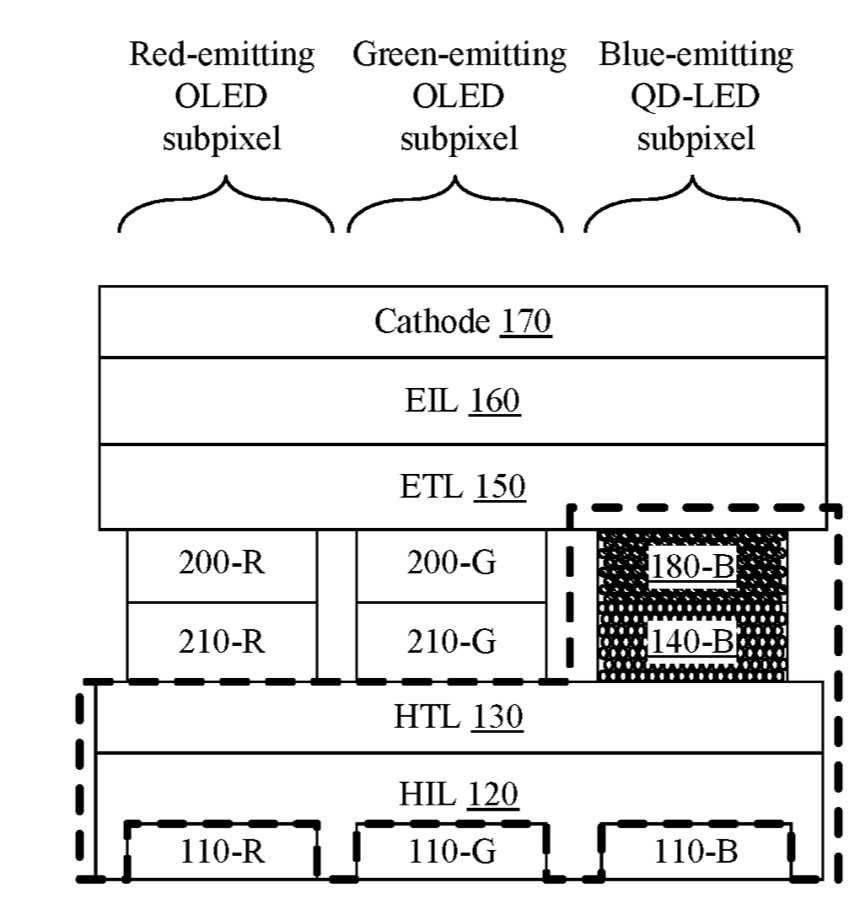Apple has filed for a patent (number 20170221969) for “Quantum dot LED and OLED integration for high efficiency displays,” which promises quantum dot pixel displays on all its devices. The displays would offer “pure color” and use less energy.
All commercial products such as TVs using quantum dots, and branded as QLED, use them to convert light for LCD backlights, rather than as part of the actual display. However, “true” quantum dot displays are an experimental display technology different from those existing commercial products. In these QLEDs, quantum dots (QD) or semiconductor nanocrystals could provide an alternative for commercial applications as electro-optical display technology.

This display technology would be similar to organic light-emitting diode (OLED) displays, in that light would be emitted on demand, which would enable more efficient displays, and is also seen as the next generation technology after OLED. However, such products are still experimental.
A side note: one of the reasons TV manufacturers like quantum dots is that they allow them to produce TVs with much higher peak brightness. This opens up some interesting possibilities, such as enabling support for ‘high dynamic range’ TVs that support standards such as Dolby Vision.
In the patent filing, Apple notes that it’s interested in state of the art displays for phones, tablets, computers and televisions (yep, TVs) that utilize glass substrates with thin-film transistors (TFT) to control transmission of backlight through pixels based on liquid crystals. More recently emissive displays such as those based on organic light emitting diodes (OLED) have been introduced because they can have a faster response time, and be more power efficient, allowing each pixel to be turned off completely when displaying black or dark colors, and be compatible with plastic substrates.
Even more recently, quantum dot light emitting diodes (QD-LEDs) have been introduced as an alternative display technology, potentially being more power efficient that OLEDs. The invention involves OLED and QD-LED stacks that are integrated into the same pixel with multiple common layers shared by the OLED and QD-LED stacks.
Of course, Apple files for — and is granted — lots of patents by the U.S. Patent & Trademark Office. Many are for inventions that never see the light of day. However, you never can tell which ones will materialize in a real product.
